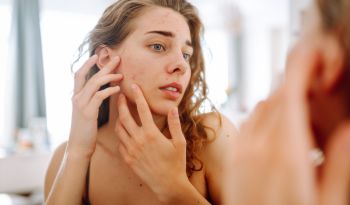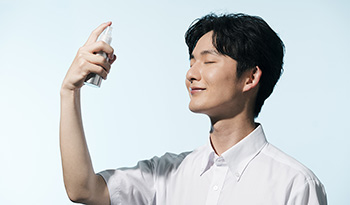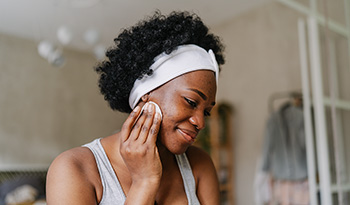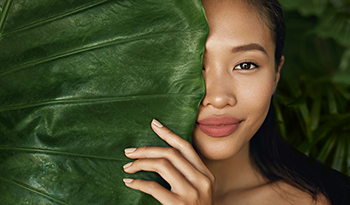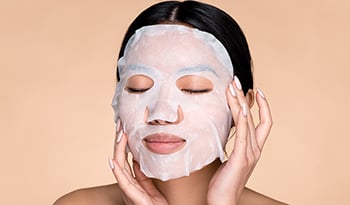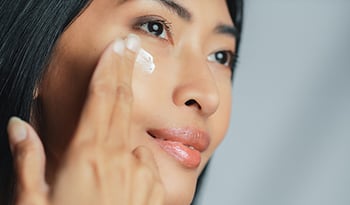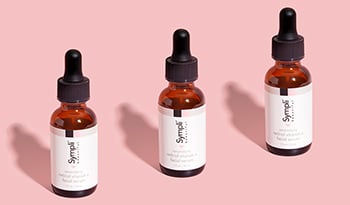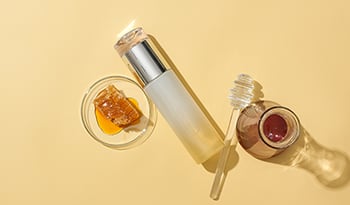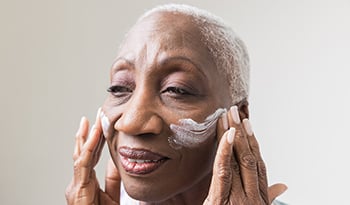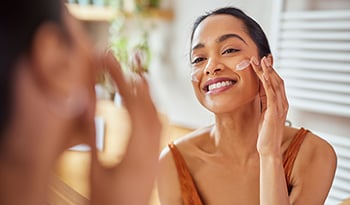Hvordan man helbreder og skjuler rosacea
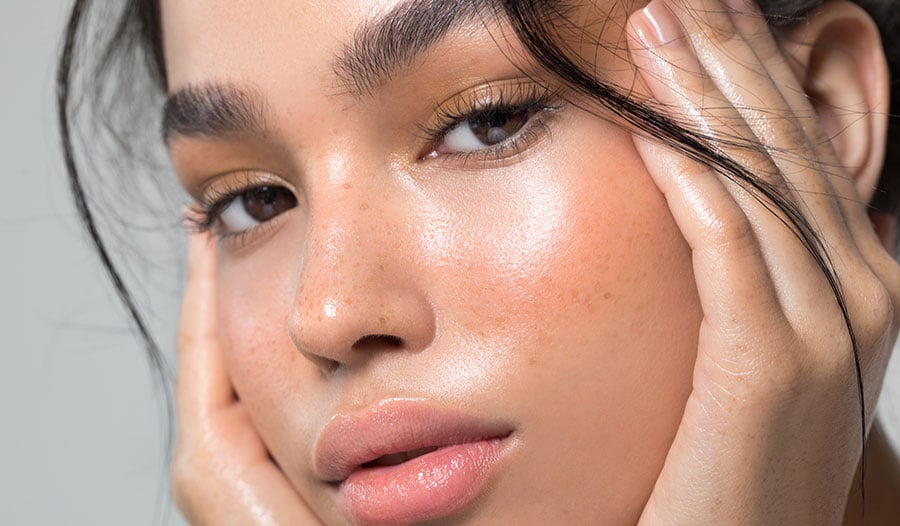
Rosacea er en hudsygdom, der normalt viser sig med rødme, der strækker sig over næse og kinder. Det kan også omfatte øget rødme (rødme), papler og pustler, tør hud, ændringer i huden på næsen og tegn på vaskulær betændelse. Det kan også involvere øjnene.
Hvordan adskiller rosacea sig fra følsom hud?
Følsom hud har en tendens til at reagere på ting, der sættes på den. Rødme og buler kan være en del af denne reaktion, men det er midlertidigt og kan løses ved at undgå de krænkende stoffer.
Rosacea er anderledes ved, at årsagen er medicinsk og ofte intern. Mens rosacea kan forværres af topiske lotioner, cremer og vaske, løser det sig ikke, når disse genstande fjernes og kræver yderligere behandling for at helbrede grundårsagen.
Hvad er de grundlæggende årsager til rosacea?
Rosacea er stadig dårligt forstået, men der er en række mekanismer og infektioner, som vi ved er forbundet med lidelsen. For det første har mennesker med rosacea højere niveauer af inflammatoriske mediatorer som mastceller, lymfocytter, immunceller og antimikrobielle proteiner i deres hud. For det andet findes infektioner som H. pylori, tyndtarmsbakteriel overvækst og et højere antal hudmider hos mennesker med rosacea. Der findes også en grad af vaskulær betændelse eller hyperreaktivitet i rosacea, hvilket i det væsentlige betyder, at blodkar er mere tilbøjelige til at reagere på ekstern stress hos mennesker med rosacea end mennesker uden det.
Det er usikkert, hvilke typer genetik der nøjagtigt er involveret i rosacea, men vi ved, at mennesker med en familiehistorie af rosacea er mere tilbøjelige til at udvikle det på et tidspunkt i deres liv, og at VEGF-genet kan være involveret. Kaffeforbrug, rygning, UV-eksponering og alkoholforbrug ser også ud til at øge risikoen for at udvikle rosacea. Rosacea er forbundet med en højere risiko for gastrointestinale sygdomme, stofskifteforstyrrelser, depression og neurologiske lidelser. Dette kan skyldes, at disse lidelser også involverer dysbiose/mikrobiompatologier, ændret vaskulær funktion og betændelse.
Sådan helbredes rosacea topisk
Der findes en række livsstils- og topiske behandlinger for rosacea. Den første er at fjerne ekstra skærpende faktorer, der kan gøre rosacea værre. Læger råder folk med rosacea til at bruge ikke-irriterende hudcremer og vaske, solbeskyttelse og lotioner. Dette kan opnås ved at købe allergivenlige hudplejeprodukter , herunder duftfri lotion og ansigtsvask til følsom hud. Personer med rosacea bør også bruge hypoallergeniske shampooer og balsam for at undgå opblusninger, da disse produkter kommer i kontakt med ansigtet. Hypoallergeniske solcremer bør også bruges.
Receptpligtige lotioner og cremer til rosacea
Receptpligtige topiske behandlinger for rosacea inkluderer normalt antimikrobielle og antiinflammatoriske receptpligtige cremer for at hjælpe med at kontrollere symptomer som metronidazol. Tal med din læge om, hvad der kan være rigtigt for dig.
Ikke-receptpligtige lotioner
Rosacea involverer vaskulær betændelse og immunaktivering. Jeg anbefaler ofte kølegeler som aloe vera til mine folk med rosacea, fordi det fra et eklektisk urteperspektiv i teorien skulle hjælpe med at trække noget varme ud af huden og ikke kan skade. Der er nogle data om, at lotioner, der indeholder lakridsrod, også kan være effektive til at reducere symptomer over en 4-ugers periode. Disse lotioner bør være en del af en symptomreduktionsplan, ikke din eneste tilgang, fordi topiske ikke-receptpligtige lotioner sjældent helbreder rosacea alene.
Sådan helbredes rosacea indefra og ud
For at helbrede rosacea er det bedste valg at helbrede det indefra og ud.
Helbred tarmen, helbred rosacea
Naturlige tilgange til helbredelse af rosacea inkluderer en omfattende tarmhelingsprotokol, hvis det er nødvendigt, herunder brug af antimikrobielle urter til at eliminere infektioner eller dysbiose, probiotika, glutamin tilskud til at helbrede kompromitteret mavevæv og fordøjelsesenzymer. Den unikke kombination af disse tilgange, du bruger, afhænger af din unikke grundårsag. Du bør arbejde sammen med din læge, herbalist, naturopatisk læge eller gastroenterolog for at bestemme, hvilken specifik tilgang du har brug for for at helbrede din tarm.
Forøg antioxidanter for at helbrede rosacea
Derudover bør personer med rosacea fokusere på at optimere sundheden i blodkar med en diæt/rutine med et højt indhold af antioxidanter, anthocyaniner, vitaminer og mineraler. Antioxidanter hjælper med at beskytte endotelceller mod oxidativ skade. Endotelceller beklæder vores blodkar og hjælper med at regulere deres funktion samt forhindre dannelse af plak. At holde dem sunde kan hjælpe med at reducere de vaskulære problemer, vi ser i rosacea, såsom rødme og telangiektasi eller synlige blodkar under huden. Antioxidanter kommer fra plantefødevarer som frugt og grøntsager, så at spise flere af disse fødevarer er en sikker, sund og lækker måde at hjælpe med at helbrede din rosacea indefra.
Sådan skjuler du rosacea
Brug fugtighedscreme først
Før du bruger en primer, skal du vaske og fugte dit ansigt med en allergivenlig vask og lotion lavet til følsom hud. Når fugtighedscremen tørre/sætter sig ned i din hud, skal du anvende en grøn primer eller concealer i tynde lag og lade tørre.
Brug primere og concealere med grøn farvetone Næste
Læger, hudlæger, kosmetologer og makeupartister er alle enige - brug grøntonede produkter til at skjule rødme forbundet med rosacea. Du kan gøre dette ved at bruge en grøn primer eller grøn concealer under en concealer med fuld dækning. Dette fungerer, fordi grøn og rød er komplementære farver - når de blandes sammen, har de en tendens til at neutralisere de ikke-neutrale toner, som hver indeholder.
Brug en foundation med fuld dækning sidst
Rene concealere og tonede fugtighedscreme giver dig mulighed for at se igennem til det nederste lag af din makeup, som kan indeholde nogle nuancer af grønt, hvis du udførte ovenstående trin. For at undgå dette skal du vælge en foundation med fuld dækning eller CC-creme, der skal påføres over den grønne primer/fugtighedscreme. Du kan påføre i tynde lag og lade tørre for at undgå sammenklumpning.
Hvis du ikke er vant til at bære makeup, kan det være nemt at smide en grøn primer på, lidt foundation og gå. Men at tage et ekstra minut på at tilføje nogle højdepunkter eller konturer til dit ansigt vil tage dit makeup-look fra „bare okay“ til ekstraordinært! Hvis du ikke er sikker på, hvordan du anvender disse looks, kan du overveje at ansætte en professionel makeupartist eller tjekke nogle tutorials på YouTube, Instagram eller TikTok. Med disse tip og tricks kan du helbrede din rosacea indefra og ud og se godt ud, mens du gør det.
Ressourcer:
- Bhargava, Rahul, m.fl. „Et randomiseret kontrolleret forsøg med Omega 3-fedtsyrer hos rosacea patienter med tørre øjensymptomer.“ Nuværende øjenforskning, bind 41, nr. 10, 6. april 2016, s. 1274—1280, pubmed.ncbi.nlm.nih.gov/27050028/, 10.3109/02713683.2015.1122810. Tilgået 14. september 2021.
- Hoffmann, Julia, m.fl. „Nye urtebiomediciner til topisk behandling af dermatologiske lidelser.“ Biomedicines, bind 8, nr. 2, 8 feb. 2020, s. 27, 10.3390/biomedicines8020027. Tilgået 11. maj 2020.
- „Behandling af rosacea.“ UptoDate.com, 2021, www.uptodate.com/contents/management-of- rosacea?search=rosacea&source=search_result&selectedTitle=1 ~43&usage_type=default&display_rank=1. Tilgået 13. september 2021.
- „Rosacea: Patogenese, kliniske træk og diagnose.“ UptoDate.com, 2021, www.uptodate.com/contents/rosacea-patogenesis-clinical-features-og-diagnosis?search=rosacea&source=search_result&selectedTitle=2 ~115&usage_type=default&display_rank=2. Tilgået 13. september 2021.
ANSVARSFRASKRIVELSE: Wellness Hub har ikke til hensigt at stille diagnoser...














































































 Indholdsfortegnelse
Indholdsfortegnelse



